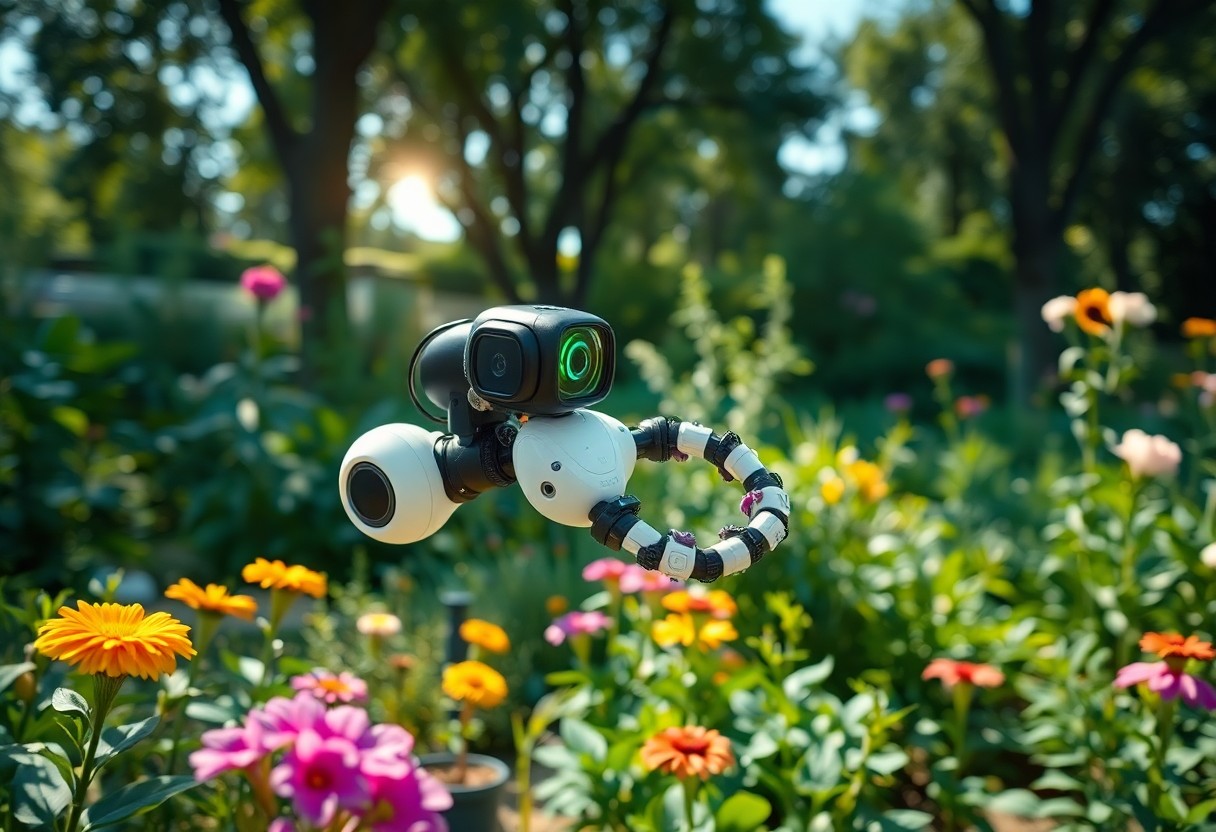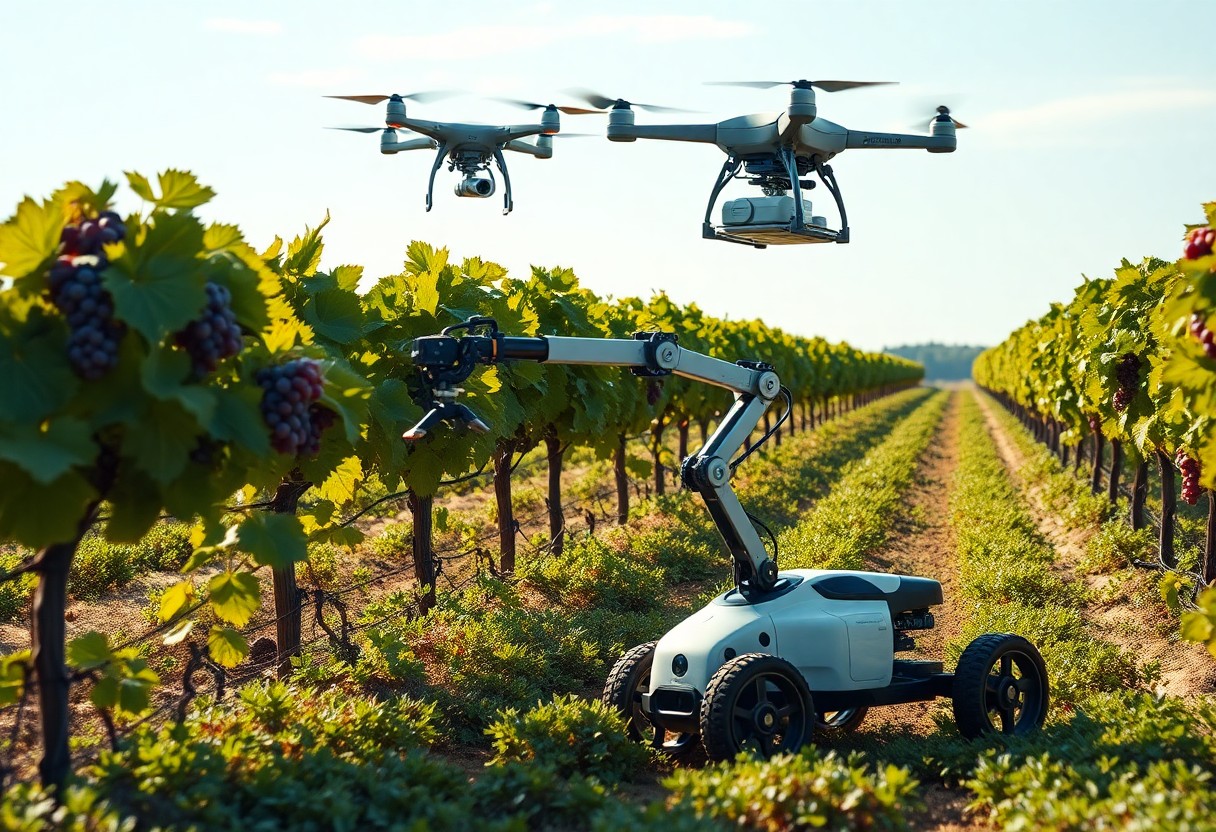Gardening enthusiasts like you are constantly seeking innovative ways to optimize plant care while promoting sustainability. You may wonder how integrating biofeedback mechanisms into robotics can revolutionize your gardening practices. By harnessing real-time data on plant health and environmental conditions, these advanced systems can assist you in making informed decisions that enhance productivity and conserve resources. In this post, we will explore the potential benefits and applications of biofeedback-enabled robotics in creating a more sustainable gardening approach.
The Science of Biofeedback: Bridging Biology and Technology
Understanding biofeedback mechanisms reveals how human responses can be transformed into actionable data, promoting greater efficiency in sustainable gardening practices. The integration of biological signals with technology can provide insight into plant health, soil conditions, and environmental factors, supporting better gardening choices. By harnessing these feedback loops, you can anticipate needs and make adjustments in real-time, optimizing your gardening techniques while minimizing resource waste.
Defining Biofeedback Mechanisms
Biofeedback mechanisms involve the measurement and analysis of physiological signals that reflect biological processes. These signals—such as heart rate, skin temperature, or electrical activity of muscles—can be monitored using sophisticated sensors and devices. In gardening, these mechanisms allow you to monitor not only your own responses but also the real-time conditions of your plants, enabling a more responsive and adaptive gardening approach.
How Biofeedback Operates in Real-Time Responses
Real-time biofeedback operates by continuously collecting and analyzing data, allowing immediate adjustments to be made in gardening practices based on specific signals. For instance, soil moisture levels can be monitored, triggering automated irrigation systems when necessary. This immediate feedback loop ensures that plants receive optimal care without wasting resources, enhancing your overall gardening success.
By employing sensors that track various parameters, such as humidity, light exposure, and temperature, you can cultivate a responsive gardening environment. Wireless technology often facilitates this process, letting you receive alerts on your smartphone or devices. When a plant shows signs of stress due to lack of water or excess heat, you can swiftly act to provide relief, ensuring healthy growth and productivity. This innovative use of biofeedback not only maximizes your gardening efficiency but also aligns closely with sustainable practices by conserving resources and reducing waste.

Robotics in Sustainable Gardening: A Technological Renaissance
The integration of robotics into sustainable gardening is redefining horticultural practices, merging technology with nature to create sustainable systems that benefit both gardeners and the environment. This technological renaissance encompasses a variety of advanced tools and approaches that streamline the gardening process, such as automated seed planting and robotic weeding. Innovations like Self-Regulating Plant Robots: Bioinspired Heliotropism … highlight how robotics can mimic natural behaviors to optimize plant growth and resource utilization.
Current Innovations in Gardening Robotics
Recent advancements in gardening robotics showcase how automation is transforming traditional practices into efficient, data-driven processes. For instance, systems such as autonomous drones are now utilized for crop monitoring and precise pesticide application, leading to reduced chemical use and enhanced yield. Additionally, robots equipped with machine learning algorithms are enabling real-time data analysis, allowing you to make informed decisions on irrigation and nutrient delivery.
The Role of Sensory and Automated Systems
Sensory and automated systems are at the forefront of empowering sustainable gardening. These technologies use an array of sensors to monitor soil health, moisture levels, and environmental conditions. By collecting data continuously, they help in crafting a responsive gardening ecosystem. For example, soil moisture sensors can signal irrigation systems to activate only when needed, conserving water and reducing overall waste. Furthermore, this real-time feedback loop can optimize growth conditions, giving your plants the best chance to thrive.
This enhancement of gardening through sensory systems creates a symbiotic relationship with nature. As you implement these automated solutions, you’ll find that they not only manage resources more efficiently but also respond dynamically to the specific needs of your garden. Soil moisture and temperature data can be integrated with weather forecasts, allowing automated systems to adjust irrigation schedules intelligently. Moreover, sophisticated robotics can detect pests early, enabling targeted treatments rather than widespread chemical applications. These innovations are not just tools; they represent a holistic shift towards a more sustainable, responsive gardening paradigm that maximizes productivity while respecting environmental limits.
Synergizing Biofeedback with Robotics for Optimal Gardening
Integrating biofeedback mechanisms with robotics can transform how you approach sustainable gardening. This fusion allows for a dynamic interplay between technology and plant systems, ensuring that your robotic helpers not only perform tasks but also adapt to real-time feedback from the environment. By utilizing sensors that monitor soil moisture, temperature, and nutrient levels, robots can adjust their actions, ensuring that your garden receives precisely what it needs for optimal growth without excess resource consumption.
Adaptive Learning Mechanisms in Robotics
Through adaptive learning, robotic systems can modify their behaviors based on the biofeedback they receive from the garden environment. For instance, if you set up a robotic irrigation system that detects low moisture levels, it can learn the optimal watering patterns and times, gradually refining its approach to reduce waste. This knowledge accumulation not only enhances efficiency but also naturally aligns with the unique needs of your garden, ultimately leading to a more sustainable practice.
Enhancing Plant Health through Continuous Feedback
Continuous biofeedback allows for real-time adjustments based on plant needs, leading to healthier, more resilient crops. Utilizing advanced sensors, robotic systems can monitor various parameters, such as humidity, soil pH, and light exposure, and respond accordingly, addressing any deficiencies instantly. For example, if your plants show signs of nutrient deficiency, a robotic system could autonomously apply the correct fertilizer at an optimal time, ensuring that their health is maintained without the risk of over-fertilization.
This proactive approach means your gardening efforts yield better results while conserving resources. By engaging in constant dialogue with your plants through these biochemical signals, your robotics systems can anticipate needs before they become critical issues. Studies have demonstrated that gardens utilizing automated biofeedback mechanisms achieve 20-30% higher crop yields, thanks to their ability to tailor care specifically to the individual needs of each plant. This seamless integration not only streamlines workflow but also fosters a healthier ecosystem. The intricacy of this system empowers you to create a flourishing garden that thrives on balance and responsive care.
Case Examples: Successful Integrations of Biofeedback in Gardening
Several projects highlight the power of biofeedback technologies in sustainable gardening. Initiatives such as the GardenBot prototype utilize sensors that track soil moisture and nutrient levels, relaying data to growers in real-time. Volunteer-led community gardens have also integrated technology to monitor plant health by measuring variables like light exposure, aiding gardeners in making informed decisions about watering and fertilization, thus encouraging eco-friendly practices.
Noteworthy Projects Leveraging Biofeedback
The SmartGarden project has garnered attention for its innovative approach to biofeedback, utilizing moisture sensors that connect with an app to notify users when their plants need water. Similarly, urban farms have employed drone technology to assess plant health, offering feedback that ensures optimal growth conditions. These projects not only boost productivity but also emphasize environmental sustainability.
Lessons Learned from Real-World Applications
Implementation of biofeedback mechanisms in gardening reveals valuable insights about the interaction between technology and nature. For instance, user engagement increases significantly when real-time feedback is provided, fostering a deeper connection between the gardener and the ecosystem. Moreover, acceptance of technology is higher when users understand its environmental benefits, such as reduced water usage and improved crop yield.
Real-world applications have consistently shown that enhancing user experience through biofeedback leads to more mindful gardening practices. Observations from urban farms indicate that integrating user-friendly interfaces with biofeedback data encourages gardeners to take proactive measures in plant care. Adjusting care based on direct feedback minimizes resource waste and maximizes crop health, demonstrating that blending technology with an understanding of ecological systems can transform how we approach gardening today. This symbiosis not only equips you with tools for better gardening but actively contributes to sustainable practices within your community.
The Future of Sustainable Gardening: A Biofeedback-Driven Paradigm Shift
The integration of biofeedback mechanisms into sustainable gardening is not just a passing trend; it signifies a profound shift towards more efficient, responsive farming practices. As you adopt these innovative strategies, your gardening efforts can become more attuned to the specific needs of your plants and soil. This evolution not only increases resource efficiency but also fosters a deeper connection between technology and nature, paving the way for a thriving, eco-conscious gardening culture.
Potential Advancements in Eco-Friendly Practices
Emerging technologies will position biofeedback as a cornerstone of future eco-friendly practices in gardening. With precise data regarding soil moisture, nutrient levels, and plant health, you can optimize your watering schedules and fertilizer application. As you implement these advancements, the reduction of water waste and chemical inputs becomes increasingly achievable, encouraging a more sustainable relationship with your environment.
Ethical Considerations and Environmental Impact
As with any innovative technology, integrating biofeedback into sustainable gardening brings ethical dilemmas regarding privacy, data ownership, and ecological disruption. You may find yourself grappling with the balance between technological advancement and the preservation of natural ecosystems, as the collection of sensitive data could lead to unintended consequences for local biodiversity.
Addressing these ethical considerations is paramount to the successful implementation of biofeedback technologies. Ensuring that data collection respects both plant ecosystems and human privacy fosters trust among local communities. You should engage with stakeholders, from local gardeners to environmentalists, to create transparent protocols that protect sensitive information and minimize ecological impact. As you engage thoughtfully in this biofeedback-driven paradigm, your contributions can help define standards that prioritize sustainability without sacrificing technological innovation.
Summing up
As a reminder, biofeedback mechanisms can significantly enhance robotics in sustainable gardening by offering real-time data that informs your gardening practices. By integrating these systems, you can optimize plant care, reduce resource waste, and promote environmental sustainability. Utilizing biofeedback will empower you to make informed decisions based on the specific needs of your garden, leading to improved growth and health of your plants while supporting eco-friendly practices. Embracing this technology could transform your approach to gardening, making it both smarter and more sustainable.







